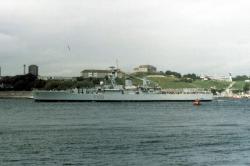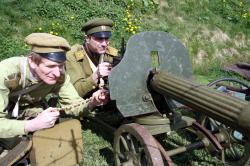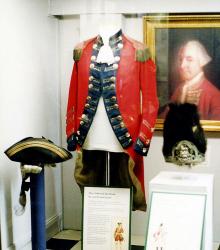Translate this Page
Spion Kop
Battle Name : Spion Kop
Date(s) : 23 January 1900 - 24 January 1900
Part of : The 2nd Boer War (or Three Years War) ,
Outcome : A victory for Boer forces over British Colonial forces
Type of battle : Land
Summary
A badly managed and bloody battle over the hill of Spion Kop when Buller made another attempt to cross the Tugela.
The British forces under Woodgate stormed the slopes and reached a false summit but failed the take the hill fully, failed to dig in and were cut down in the cross-fire from neighbouring hills and counter-attacking Boers. Losses on both sides caused both to believe they were losing and retire in the gathering darkness on the 24th. Only the Boers decided to re-attempt the hill, to find it un-occupied, other than by the dead. The British had lost heavily, and gained nothing.
Location
The hill of Spion Kop, north of the Tugela River in Natal, South Africa. (South Africa)
More details
Redvers Buller still wanting to force passage over the Tugela to relieve Ladysmith decided to send Sir Charles Warren over Trichardt's Drift and secure the important road between the mountains of Tabanyama and Spion Kop. Buller would then move against the Boer left flank over Potgieters Drift.
Warren moved with painful slowness, missing an opportunity to take his objectives against little resistance, and only attacking Tabanyama when the Boers were ready for them. He then decided to send Woodgate and Thornycroft against Spion Kop. They gained what the thought was the summit in the dark and mist early on the 24th with little problem, but failed to effectively dig in (they had few entrenching tools and no sandbags). When the mist cleared and they were found not to have gained the actual peak at all, but were raked by fire from above and the surrounding peaks, casualties began to mount.
The British were unable to haul any big guns up the steep slopes of the Kop, and soon Boer reinforcements were pouring up the other side to engage in bloody, point-blank musketry duels.
Throughout the day reinforcements joind both sides but by late in the afternoon, both sides were exhausted, and since neither could fully see the state of the other, both sides thought they were loosing. By night fall, Thorneycroft, who was now in command following Woodgate's demise that morning, decided enough was enoough and ordered the retreat. At about the same time the Boers were also falling back, and it was only when Louis Botha roused a few diehards to re-ascend did they realise the hill was unoccupied and re-took their positions.
The butchers-bill for the British was high, at around 1,800 killed, wounded and missing. The Boers was nearer 200.
Casualty figures
British Colonial forces
- Number engaged :
- n/a
- Casualties :
- 1,733
Boer forces
- Number engaged :
- n/a
- Casualties :
- n/a






